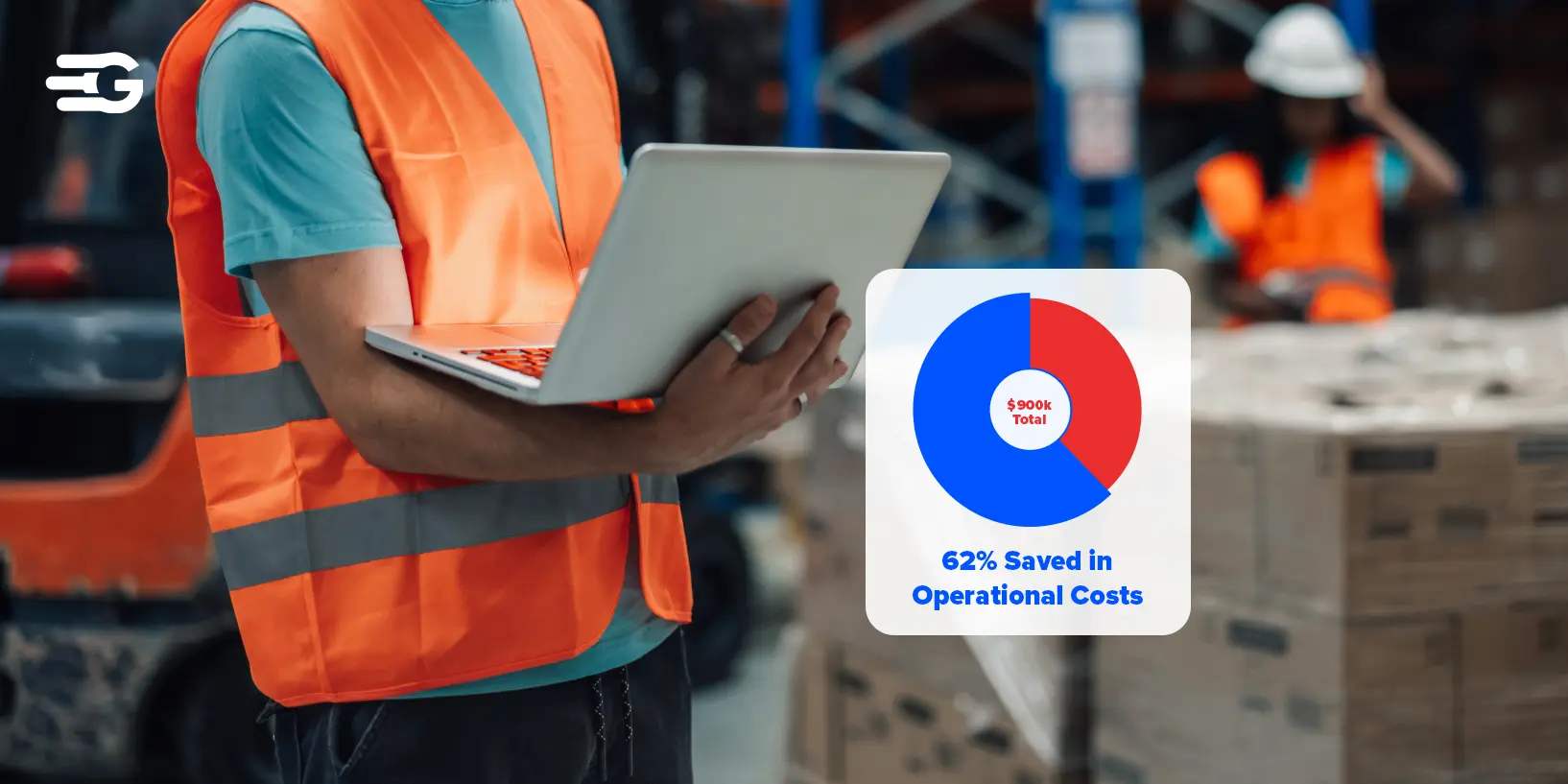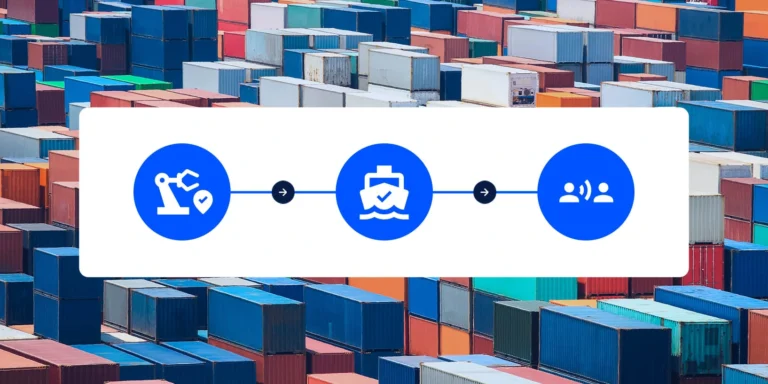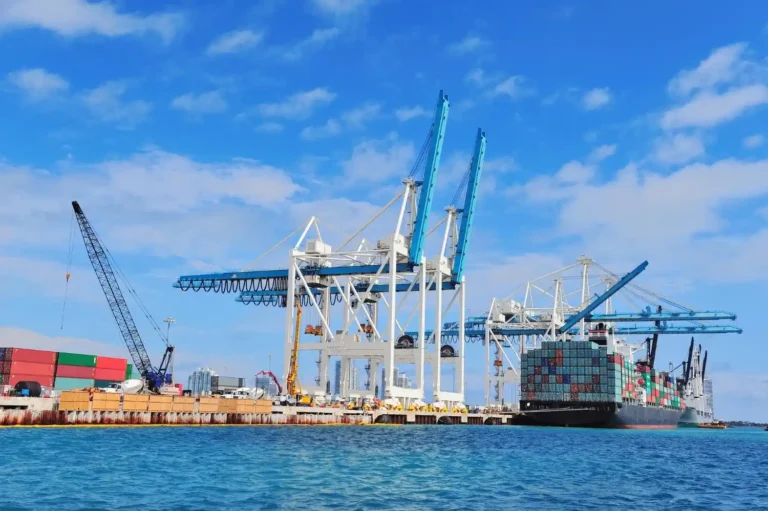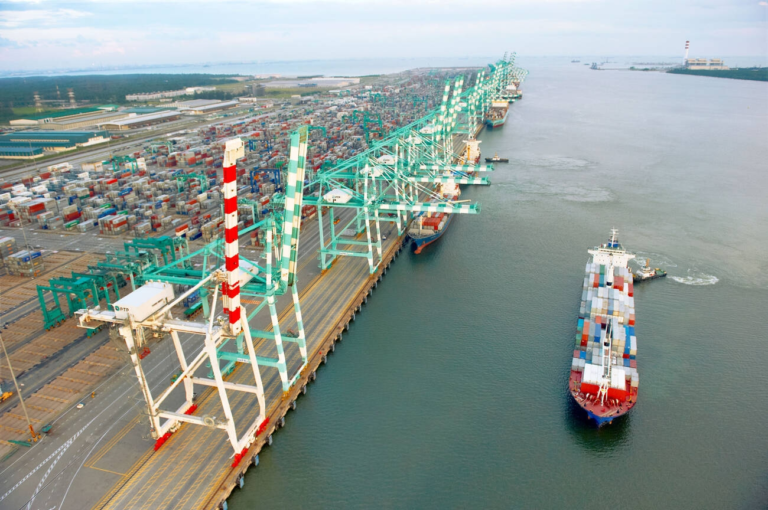The Digital Transformation of Logistics: Harnessing the Power of a Control Tower
In today’s dynamic global marketplace, efficient supply chain management is more than a competitive advantage—it’s a necessity. With rising customer expectations, unpredictable market conditions, and ever-increasing operational costs, logistics leaders are under constant pressure to streamline processes, enhance visibility, and drive down costs. Enter the logistics control tower: a revolutionary concept that leverages advanced technologies to create a centralized command center for monitoring, analyzing, and optimizing supply chain activities in real time.
In this blog post, we will explore the evolving landscape of logistics, discuss the challenges and opportunities it presents, and delve into how a logistics control tower can transform your operations. We’ll also examine key data trends and real-world examples that highlight its benefits, with a special focus on how solutions like those offered by GoComet are leading the way.
The Evolving World of Logistics: Challenges and Opportunities
The global logistics industry has experienced a seismic shift over the past decade. Factors such as globalization, digital transformation, and heightened customer expectations have disrupted traditional supply chain models. Companies now face challenges including:
Complexity in Operations: Modern supply chains span multiple geographies and involve numerous stakeholders. Coordinating activities across suppliers, carriers, warehouses, and distribution centers can be a daunting task.
Visibility Gaps: Without real-time data, businesses often operate in silos, leading to inefficiencies and a lack of responsiveness to disruptions.
Rising Operational Costs: Fuel price volatility, labor shortages, and increasing regulatory compliance costs have placed immense pressure on logistics budgets.
Demand for Agility: The need to respond rapidly to market changes has never been greater. Businesses that fail to adapt quickly risk falling behind their competitors.
In response to these challenges, companies are increasingly investing in digital technologies that enhance visibility and improve decision-making. One of the most impactful innovations in this space is the logistics control tower.
The Role of Technology in Transforming Logistics
Digital transformation is fundamentally reshaping logistics. Technologies such as the Internet of Things (IoT), artificial intelligence (AI), machine learning (ML), and cloud computing are now at the forefront of supply chain innovation. These tools enable businesses to:
Aggregate Data: By integrating data from various sources—ranging from telematics and sensors to enterprise resource planning (ERP) systems—companies can obtain a holistic view of their operations.
Analyze and Predict: Advanced analytics and ML algorithms process vast amounts of data to identify patterns and forecast potential issues before they escalate.
Enhance Communication: Cloud-based platforms facilitate seamless collaboration between internal teams and external partners, ensuring that everyone stays informed.
Automate Routine Tasks: Automation reduces manual interventions, freeing up staff to focus on higher-value activities and strategic decision-making.
These technological advancements provide the foundation upon which logistics control towers operate, enabling them to transform fragmented data into actionable insights.
What Is a Logistics Control Tower?
A logistics control tower is a centralized platform designed to monitor, manage, and optimize supply chain operations in real time. Think of it as a nerve center where information converges, allowing logistics professionals to oversee the end-to-end supply chain with unparalleled clarity.
Key features of a logistics control tower include:
- Real-Time Visibility: By aggregating data from multiple sources, control towers offer a comprehensive view of logistics operations, from inventory levels to shipment statuses.
- Predictive Analytics: Advanced algorithms analyze historical and current data to predict disruptions, optimize routing, and reduce delays.
- Proactive Decision-Making: With real-time insights, companies can quickly address issues before they escalate, mitigating risks and minimizing downtime.
- Collaboration Tools: Control towers enable seamless communication across the supply chain, ensuring that all stakeholders are aligned and informed.
- Performance Metrics: Dashboards and reporting tools provide detailed performance metrics that help businesses track progress and identify areas for improvement.
By leveraging these capabilities, companies can shift from reactive problem-solving to proactive supply chain management, thereby reducing costs and improving service levels.
Data Insights: The Impact of Digital Transformation
Recent studies and industry surveys highlight the transformative impact of digital technologies on logistics:
Increased Efficiency: Research indicates that companies employing real-time data analytics and predictive maintenance can reduce operational costs by up to 20%. This is largely due to decreased downtime and optimized routing, which result in significant fuel and labor savings.
Enhanced Responsiveness: Organizations that have implemented digital supply chain solutions report a 30% improvement in their ability to respond to disruptions. This agility is crucial in today’s fast-paced environment, where delays can lead to lost revenue and diminished customer satisfaction.
Sustainability Benefits: Improved route planning and load optimization contribute to lower carbon emissions. According to industry reports, smart logistics solutions can reduce CO2 emissions by as much as 15%, supporting companies’ sustainability goals.
Customer Satisfaction: With greater transparency and faster delivery times, customer satisfaction levels have risen dramatically. Digital transformation not only boosts efficiency but also helps build trust with clients, a key differentiator in competitive markets.
These data points underscore the tangible benefits of integrating advanced technologies into logistics operations, making a strong case for the adoption of a logistics control tower.
How a Logistics Control Tower Can Cut Costs and Improve Operational Efficiency
Unlocking Cost Savings and Efficiency Gains
The logistics control tower serves as a critical tool in modern supply chain management. Its real-time monitoring capabilities enable companies to make informed decisions swiftly, resulting in both cost savings and enhanced operational efficiency. Here’s how:
Optimized Routing and Load Planning:
With real-time data, logistics managers can optimize routes for shipments, reducing unnecessary mileage and fuel consumption. Advanced algorithms take into account traffic patterns, weather conditions, and other variables, ensuring that each route is as efficient as possible.
Reduction in Downtime:
Predictive analytics enable companies to foresee potential issues—such as equipment failures or delays—and take preventive measures. This proactive approach minimizes downtime, ensuring that shipments stay on schedule and resources are utilized effectively.
Improved Inventory Management:
By monitoring inventory levels in real time, businesses can reduce the risk of stockouts or overstock situations. Better inventory management leads to reduced warehousing costs and improved cash flow.
Enhanced Collaboration Across Stakeholders:
A centralized control tower facilitates communication between suppliers, carriers, and internal teams. This enhanced collaboration helps to quickly resolve issues and adjust plans as needed, ensuring that everyone is working towards the same goals.
Data-Driven Decision Making:
With access to comprehensive performance metrics, managers can identify inefficiencies and implement targeted improvements. This data-driven approach fosters a culture of continuous improvement, leading to long-term cost reductions.
Spotlight on GoComet
In the realm of logistics control towers, GoComet stands out as a leading innovator. GoComet’s platform is designed to empower logistics teams by providing deep visibility into every facet of the supply chain. By integrating advanced analytics, real-time tracking, and robust communication tools, GoComet helps companies streamline operations and significantly cut costs.
Centralized Command Center:
GoComet offers a comprehensive dashboard that brings together data from various sources, enabling logistics managers to monitor shipments, track performance, and make informed decisions in real time.
Proactive Issue Resolution:
The platform’s predictive analytics capabilities allow companies to identify potential disruptions before they occur. By addressing issues proactively, GoComet helps reduce downtime and mitigate risks.
Scalable and Customizable:
Whether you’re a small business or a large enterprise, GoComet’s solution is scalable and can be customized to meet your specific needs. This flexibility makes it an ideal choice for companies looking to modernize their logistics operations.
Cost Efficiency:
By optimizing routes, improving load planning, and enhancing overall visibility, GoComet directly contributes to reducing operational costs. Their solution is a prime example of how digital transformation in logistics can deliver tangible financial benefits.
By leveraging platforms like GoComet, companies not only achieve significant cost savings but also position themselves to respond more effectively to the challenges of a rapidly evolving market.
Real-World Applications and Future Trends
As more companies adopt logistics control towers, the impact on supply chain efficiency continues to grow. Here are a few real-world applications and future trends shaping the industry:
- Disaster Recovery and Resilience:
In times of crisis—such as natural disasters or unexpected market shifts—control towers provide critical insights that enable rapid response. This resilience is essential for maintaining supply chain continuity and minimizing the impact of disruptions. - Sustainability Initiatives:
As environmental concerns become more pressing, companies are increasingly turning to smart logistics solutions to reduce their carbon footprint. By optimizing routes and reducing fuel consumption, control towers play a key role in supporting sustainable practices. - Integration with Emerging Technologies:
The future of logistics will likely see greater integration of emerging technologies such as blockchain for enhanced transparency, drones for last-mile delivery, and robotics for warehouse automation. Control towers will serve as the central hub for coordinating these advanced systems, ensuring they work together seamlessly. - Enhanced Customer Experience:
With real-time tracking and proactive communication, customers are kept informed about their shipments at every stage of the process. This transparency not only improves satisfaction but also builds trust and loyalty. - Data Monetization:
The wealth of data generated by control towers presents new opportunities for companies. By analyzing trends and sharing insights with partners, organizations can create new revenue streams and drive further efficiencies across the supply chain.
The logistics industry is at a crossroads, where digital transformation is no longer optional but essential. A logistics control tower represents the next step in this evolution—a sophisticated, centralized platform that transforms how companies manage their supply chains. By leveraging real-time data, advanced analytics, and robust communication tools, these control towers enable businesses to reduce costs, enhance operational efficiency, and stay agile in an ever-changing market.
The compelling data and success stories emerging from this digital revolution make it clear: companies that invest in smart logistics solutions, such as those provided by GoComet, are poised to reap substantial benefits. From optimized routing and predictive maintenance to improved inventory management and seamless stakeholder collaboration, the logistics control tower is not just a tool for today but a blueprint for the future of supply chain excellence.
Embracing this technology means not only cutting costs but also building a resilient, responsive, and sustainable supply chain ready to meet the demands of tomorrow. Whether you’re looking to gain a competitive edge or simply ensure your operations remain robust in the face of unforeseen challenges, now is the time to consider how a logistics control tower can transform your business.




